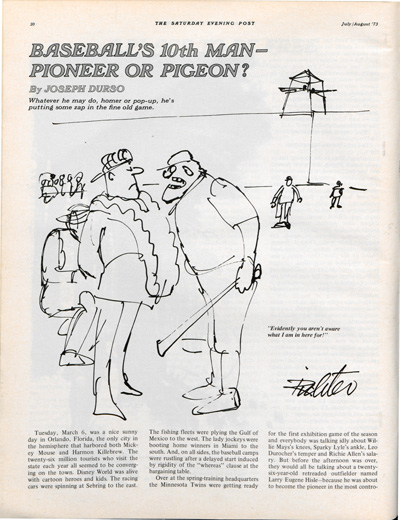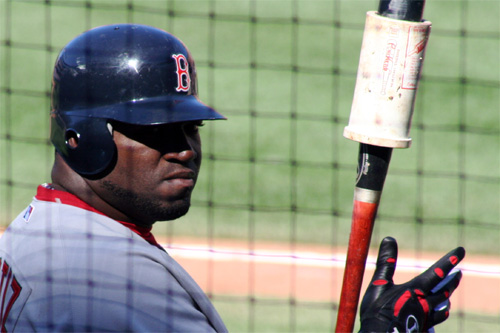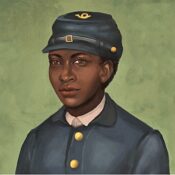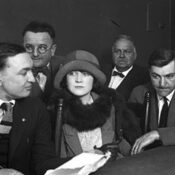Traditions won’t take care of themselves. They’re living creatures that require our careful tending to survive across time. But the care and feeding of traditions is a tricky job. Alter a tradition too much and you can undermine its value. Leave it untended and it can lose its meaning and become an archaic curiosity.
We could offer hundreds of examples of the challenge of maintaining tradition, but this week is the anniversary of a particularly good example: the 1973 introduction of the Designated Hitter Rule to major-league baseball.

by Joseph Durso
July/August 1973
Keep in mind that baseball continually changes. It has altered so much since its earliest form that a game played by 1880 rules looks oddly quaint to modern viewers. Year after year, the baseball commission had imposed rules to improve the game: making it safer, more competitive, and more enjoyable to play and watch. Some of the changes, though, were made to increase the profitability of the baseball. The Designated Hitter (DH) Rule falls into this last category. Team owners hoped that the DH would boost scores and, more important, revenues.
The rule was a response to a generally accepted fact of baseball: pitchers were generally the weakest batters on the team. They might be able to hurl thunder and lightning across home plate, or make a ball dance slowly toward home plate to seduce batters into fevered swinging, but they rarely had the additional talent for hitting the ball. So when it came time for a pitchers turn at bat, it was often the sleepiest part of the game.
The DH rule allowed a team to add a 10th player who would go to bat for the pitcher. Inevitably, the DH was a powerful batter who would rarely play the field. The first DH stepped into the batter’s box in 1973. Larry Eugene Hisle batted in place of the Minnesota Twins’ pitcher in a pre-season game and hit a home run with two men on base, then a grand slam.
According to a Post article,
“when nine of the twelve clubs in the American League drew fewer than a
million customers in 1972, the stampede was on. The villain: the 6-foot-4-inch pitcher with overpowering stuff. The victim: the man waving a baseball bat 60/2 feet away. The reason, suggested Gabe Paul: “The pitchers and the stadium grew too big.”“Larry Hisle didn’t realize it at the time, but that was his cue. Actually, the cue had been sneaking up on him. In 1895, the infield fly rule was adopted to keep smart infielders from tricking unsmart base-runners. In 1901, it was revised to protect the innocent. In 1920, the spitball was outlawed. In 1950, the strike zone was defined (armpit to top of knee). In 1963, it was defined again (top of shoulder to bottom of knee). In 1969, would you believe armpit to top of knee again?
“Then men walked on the moon, the Mets won the pennant and the redink wretches of the American League began clamoring for somebody, anybody, to put more clout into the old ball game. Enter the tenth man: the ‘designated hitter.’
“He arrived in 1969, during the same summer Neil Armstrong arrived on the
shore of the Sea of Tranquility, but nobody paid much attention. Still, in places like Rochester and Syracuse and Toledo, he was often the talk of the town: the man who did nothing but bat for the pitcher… He was experimental that summer, his stage was the [highest level of the minor league] and his impact on the seas of baseball tranquility was immediate.“Batting averages in the league promptly rose by as much as 17 points for the first-place club. More runs were scored. The designated hitters collectively batted 120 points higher than the pitchers they replaced. The pitchers — who were allowed to stay in the
game strictly as pitchers — began to stick around a lot longer.“Also, since nothing takes so much time in a baseball game as changing [an exhausted] pitcher, the games zipped along: ten minutes shorter on the average. The fans, reported George Sisler, the league president, “overwhelmingly liked it” when polled.”
Today, the support is far from overwhelming. Many fans still refuse to accept the idea. To them, the DH rule is the worst change ever introduced to the game. They consider the DH an alien on the team — a creature spawned in the box office to ruin the spirit of the game.
Fortunately, baseball offers an alternative: the DH Rule is used by only half of the major-league teams; there are no designated hitters on National League teams. So when fans debate the virtues and evils of designated hitters, they can compare the performance of teams between the two leagues.
You don’t have to be a rabid baseball fan to see an intriguing question beneath the controversy. The Designated Hitter Rule is a fundamental controversy that can be found in art, goverment, philosophy, and religion: is it better to change the rules to achieve desired results, or should we improve our performance within the existing rules? This question in this controversy is similar to that which launched the Reformation and split the artistic community over Modernism.
We can argue that altering the game of baseball to make it more appealing will ensure the survival of the sport. We can also argue that a game that’s changed to make it more amusing is no longer the original game. When we change the form of a baseball game, we also change its substance. And after 36 years, a lot of people don’t like the new substance that is Designated Hitter baseball.
At one level, it is just an argument about what makes good baseball. At another level, though, it is a debate about playing with tradition.
Some will say baseball is a metaphor for life. We believe what the learned theologian Rev. Arthur Heinze says: “Life is a metaphor for baseball.”
Become a Saturday Evening Post member and enjoy unlimited access. Subscribe now




Comments
Most baseball leagues use the DH rule. Its not about “profitability”, its about protecting pitchers and getting the most out of them. Most baseball fans enjoy watching the pitchers work, and they are often robbed of the exciting late inning pitching by the lack of a DH. Also, Why do Conservatives like Paul have to constantly bring up politics? You must be obsessing about progressives all the time. That was a really bad attempt at humor by the way.
Excellent info, thanks much.
BTW: my pet peeve: “advertising in fair teritory;” no problem w/generating income for the owners, just have no signs on the walls in fair territory. They are turning some great fields-of-play into minor league stadiums…
If the DH rule is not revoked, then I insist that the 3 point shot in the NBA be revised so that it will only be allowed in the Western Conference!!!
The DH was created by Liberals who thought it was cruel to make a pitcher swing a bat. It complemented their concept of “cruel and unusual punishment”.
If George Will says the DH rule is evil – then it musrt be Evil.
I would like to see the DH sent do the deleted file. It is no longer helpful, and often degrading to the game.
Get rid of the rule!
That was really interesting! Liz thinks so, too. Well written, nice hook, thank you for not being a bad writer.
Hi
Very nice and intrestingss story.
thanks for the info
“Life is a metaphor for baseball.” this guy Rev. Arthur Heinze is a big fan of baseball. :D.